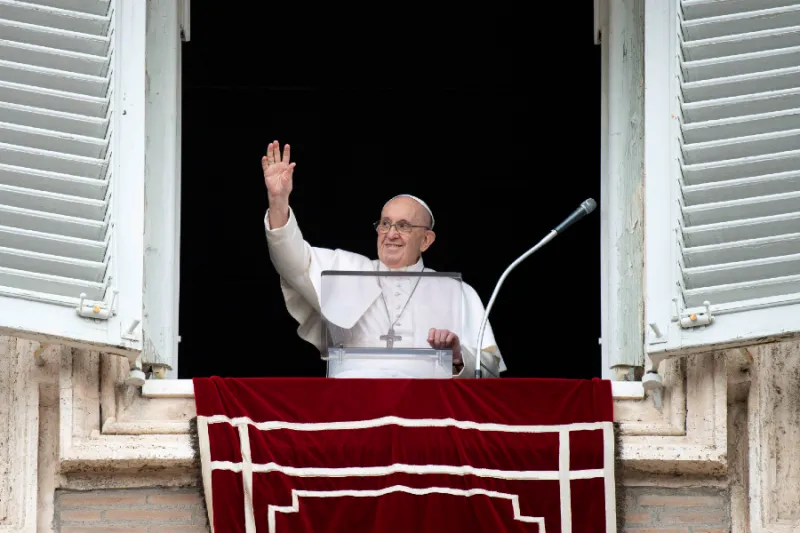
CNA Newsroom, Dec 18, 2022 / 07:00 am (CNA).
In the days before Christmas, the traditional “posadas” are usually celebrated in Mexico, recalling the difficulties of St. Joseph and the Virgin Mary in finding a place for Jesus to be born. How did this custom come about?
Father José de Jesús Aguilar, deputy director of Radio and Television for the Primatial Archdiocese of Mexico, explained that the posadas, which means “inns” in Spanish, are the fruit of the inculturation of the Gospel in the New World.
In a video, the priest highlighted that “the Gospel reached these lands with the preaching of the first groups of missionaries: Franciscans, Dominicans, and Augustinians.”
“The Augustinians discovered that the indigenous people celebrated the birth of the sun with songs and lights around the winter solstice, i.e. from Dec. 20 to 23. So, they decided to compare Christ to the sun and teach that Jesus Christ is the true sun of truth and justice,” the Mexican priest explained.
In this way, he said, the Catholic priests “took advantage of the nocturnal celebrations of pre-Hispanic origin and gave them a new meaning: accompanying Mary and Joseph on their pilgrimage to Bethlehem, looking for lodging.”
However, it would not be until 1587, when Pope Sixtus V granted special permission to Friar Diego de Soria to celebrate nine evening Masses leading up to the days before Christmas, that the tradition began.
“Thus, the posadas began with the celebration of nine Masses from Dec. 16 to 24. Later other elements outside the church were added, such as the procession with the pilgrims, the singing of the Marian litany, and the request for an inn (posada) and the piñatas.”
Today, the procession, or “caminata,” involves a reenactment of Mary and Joseph’s search for an inn. People hold lit candles and sing hymns. The group either carries figurines of Mary and Joseph or has kids dressed up as them.
Neighbors coordinate so that the group will attempt to visit several homes but be turned away, as there was no room at the inn for the Holy Family.
Finally, a home welcomes the couple and everyone sings in unison as a door is opened: “Enter, holy pilgrims, receive this corner, for though this dwelling is poor, I offer it with all my heart. Oh, graced pilgrim, oh, most beautiful Mary. I offer you my soul so you may have lodging.”
“The first posada was held in the Augustinian convent of Acolman, a place very close to Teotihuacán,” said Father Aguilar, noting that “with the passage of time they began to celebrate in neighborhoods, streets, and patios, taking on a more totally popular character.”
Teotihuacán was a pre-Hispanic pagan religious center and the site of the Pyramids of the Sun and the Moon.
The piñata, one of the most characteristic elements of the posadas, “had its origins in China and was used on holidays,” the priest said.
Originally they were made “with wooden rods and paper, something very similar to lanterns,” but when the piñatas came to Italy they underwent a transformation.
“There, a clay pot was used as a base, which was shaped into a pine cone or other plants, with pieces of paper from China. That’s why it was called a piñata.
“When the piñata came to Mexico, it took the shape of the star of Bethlehem and continues to take many more shapes,” the priest explained.
Another interpretation of the seven points of the piñata is that they represent the seven deadly sins of pride, envy, greed, lust, gluttony, sloth, and wrath.
The stick the children use to beat the piñata represents virtue, and being blindfolded represents faith. The candy falling to the ground is symbolic of God’s mercy.
This story was first published by ACI Prensa, CNA’s Spanish-language news partner. It has been translated and adapted by CNA.
If you value the news and views Catholic World Report provides, please consider donating to support our efforts. Your contribution will help us continue to make CWR available to all readers worldwide for free, without a subscription. Thank you for your generosity!
Click here for more information on donating to CWR. Click here to sign up for our newsletter.





In 1598 after conquistador Juan de Oñate established Spanish rule in New Mexico, Arizona a small mestizo community was established in the Santa Fe, Red River and adjacent areas that survived the Great Pueblo Revolt of 1680 until the present day. It was augmented during Spanish rule, land grants from the Spanish king [after the Mex Am War and US absorption these land grants were ignored], later refugees fleeing violence during a series of wars, revolutions in Mexico late 19th into the 20th century. They brought the posada Christmas practice with them. I first experienced this enchanting form of ritual enactment of the Holy Family seeking refuge in NM. At nights leading to Christmas they planned visits to homes, in one instance my rectory on the Jicarilla Apache Nation [reserve]. Some of the most beautiful religious songs I’ve heard were during these candle lit caminatas. The houses they visited prepared food for the visitors after the ritual request for entrance. When they came by surprise to visit me they brought wonderful food, songs, and unforgettable Christian warmth.